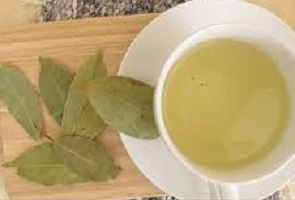Does Rice Flour Rise with Yeast?
Does rice flour rise with yeast? Does yeast make rice flour rise?

Keep in mind that rice flour does not rise as well as flour containing gluten, so you might need to use a smaller pan or add more leavening agents.
Use 1 teaspoon vinegar or 1/4 teaspoon ascorbic acid per 4 cups of flour when making yeast bread with rice flour to help the bread rise.
Table of Contents
What makes rice flour special?
Rice flour provides more fiber than conventional all-purpose wheat flour and is naturally gluten-free for those who have intolerances or who follow a gluten-free diet.
Not to mention rice flour is filled with vitamins and minerals, is low in sodium, and is suitable for the whole family.
- It has a neutral flavor
- The color ranges from white to brown (depending on bran content)
- It’s digested easily
- It is considered hypoallergenic
What is rice flour made of?
What Is Rice Flour?
Finely ground rice is used to make rice flour, which is mostly used in gluten-free baking or as a dusting powder in large-scale commercial baking operations.
Since rice flour naturally thickens food, it is frequently used as a gluten-free substitute for wheat flour in Asian cuisines.
Additionally, to avoid dough stickup in high hydration doughs, rice flour is used as a dusting powder and a crucial element in baking for the creation of polymeric networks.
Rice Flour Nutrition
Rice flour has high fiber content, is gluten-free, and is low in salt, saturated fat, and cholesterol.
It is a substantial source of manganese but has less nutritional value than whole-grain rice or brown rice flour.
In contrast to wheat, rice’s bran contains both oil and enzymes, but not the germ.
Does rice flour rise with yeast? Does yeast work with rice flour?
Rice flour lacks the elastic protein molecule known as gluten, which is necessary for yeast bread to rise correctly.
What rice is rice flour?
Depending on your preference, you can produce rice flour using either white rice or brown rice.
Use any short- or medium-grained rice variety that is non-sticky. Give the rice grains some time to soak, and then completely drain them before grinding them.
Compared to regular flour, is rice flour healthier?
Brown rice flour
Additionally, it is higher in manganese, which may support bone health, and B6 (a vital vitamin that serves a number of functions in the body). It also has more fiber than normal flour.
Can I substitute rice flour for bread flour?
Rice flour cannot be used as a 1:1 swap for ordinary flour. Since rice is a much tougher grain than wheat, rice flour does not contain gluten and does not absorb liquid as well.
If you substitute rice flour for regular flour in cooking or baking, the products will be grainy, maybe greasy, and frequently have a sticky texture
What happens when rice flour is added to bread?
In baked items that are gluten-free, rice flour is used in place of wheat flour.
This component results in bread with a smaller loaf size, a tougher texture, and a shorter shelf life.
Does white rice flour have yeast? Does rice flour rise with yeast?
Because rice flour has less yeast, you might need additional baking soda when baking.
White rice flour stands out from other types of flour because of its silky smooth texture and bright white hue.
Do you need xanthan gum with rice flour?
Using sweet rice flour instead of xanthan gum eliminates the need for binding and provides a wonderful, soft crumb for gluten-free baking.
Does baking powder make rice flour rise?
If you use rice flour only in your baking, however, you will have trouble getting your product to rise if you do not add baking powder since rice flour does not have the magical element that all wheat flours include – gluten.
How do you ferment rice flour?
Method:
- Firstly, mix the flour and the water in a non-metallic bowl.
- Then, cover with a towel or plastic wrap and keep in a warm, dry place.
- After that, keep undisturbed until a few bubbles appear on the surface of the batter which shows the start of the fermentation process.
Does rice flour cause inflammation?
Consuming rice flour can contribute to the body’s inflammatory response, which also contributes to heart issues.
Blood glucose levels increase when rice flour is consumed, and any extra glucose in the blood is converted to fat.
What should someone with a yeast allergy stay away from? Does rice flour rise with yeast?
Foods to avoid if you have yeast intolerance include:
- Curred and processed meats.
- Aged cheese
- Dry fruit.
- Cubes of gravy and stock.
- Juices from processed fruits.
- Condiments
- Vinegar-containing ingredients.
- Alcohol (brewer’s yeast)
What does rice flour do in bread making?
In baked items that are gluten-free, rice flour is used in place of wheat flour.
This component results in bread with a smaller loaf size, a tougher texture, and a shorter shelf life
Can I substitute rice flour for self-rising?
For results that are closer to those of wheat flour, rice flour works best when combined with other gluten-free flour.
To guarantee that the outcomes resemble those of self-rising flour, you might need a leavening agent.
A gluten-free substitute for wheat flour is rice flour.
What does rice flour do?
In addition, rice flour can be used to thicken soup and stews as well as tempura batters for frying chicken, veggies, and other foods.
If baking isn’t your thing, use your freshly ground rice flour for the typical wheat flour in your next soup, like this one with chicken and wild rice.
Is rice flour suitable for use as all-purpose flour?
In some recipes, it can be partially substituted for all-purpose flour, but not 1:1. Instead of all-purpose flour, white or brown rice flour can be used sparingly in cooking as a thickening in sauces or stews because it is naturally gluten-free.
What happens if you don’t use xanthan gum?
It is possible to simply omit gums from your recipes, but doing so will influence not only the taste of your baked goods but also their appearance and texture.
So you should actually substitute it with anything else if you want to avoid gums.
Can you ferment rice flour?
Using the appropriate bacteria strain, rice flour is first transformed into glucose liquid, which is then fermented to create organic salts.
The resultant liquid natural vinegar is later processed and spray-dried to get the desired powder form.
Does rice contain yeast? Does rice flour rise with yeast?
Items manufactured from corn, rice, oats, and thick wheat products like pasta are among the grains that don’t contain yeast.
Xanthan gum serves to replace what?
In some situations, nevertheless, there are effective alternatives to xanthan gum, including chia seeds, agar agar, flax seeds, and psyllium fiber.
In addition to being used in baking, xanthan gum is also used to thicken ice cream, dressings, gravies, and sauces.


